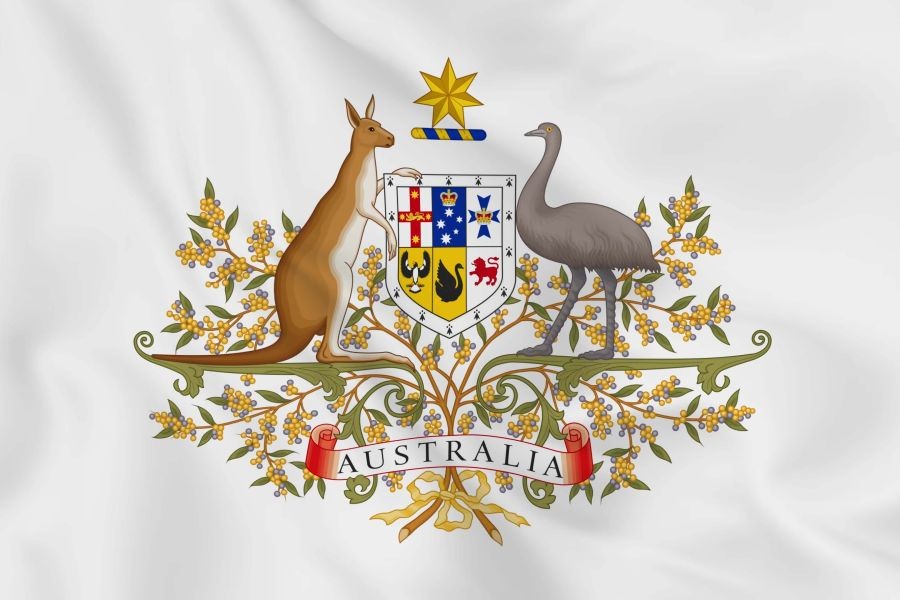Australia, a land rich in biodiversity, has long embraced its unique fauna as national symbols, with the kangaroo and emu proudly represented on the national coat of arms. However, as environmental challenges grow, a new narrative is emerging: Could an endangered animal become Australia's next national symbol? This question not only reflects the country's commitment to conservation but also highlights broader trends in sustainability, economic policy, and cultural identity.
The Importance of National Symbols
National symbols carry immense weight, representing a country's values, history, and aspirations. In Australia, animals have been more than just emblems; they embody the spirit of resilience and the unique ecological tapestry that defines the nation. Embracing an endangered species as a national symbol could signify a profound commitment to preserving biodiversity and combating environmental threats.
Australia’s Economic and Environmental Context
The Australian economy is intricately linked to its natural resources. According to the Australian Bureau of Statistics (ABS), the agriculture, forestry, and fishing industries contributed 2% to the GDP in 2023. However, environmental degradation poses significant risks to these sectors. The Reserve Bank of Australia (RBA) has warned that climate change could impact economic stability due to its effects on resources and agricultural productivity.
Recognizing this, the Australian government has ramped up efforts for conservation and sustainability. The introduction of policies like the Australian Carbon Tax and commitments to the Paris Agreement highlights a strategic shift towards integrating environmental considerations into national economic planning.
Why an Endangered Animal?
Adopting an endangered animal as a national symbol could serve multiple purposes. It would raise awareness about conservation efforts and galvanize public support for protecting threatened species. Moreover, it would align with Australia’s growing emphasis on sustainable tourism, which leverages the country's unique biodiversity to attract visitors and boost the economy.
Case Study: The Bilby
The bilby, a small marsupial native to Australia, has been a focal point of conservation campaigns. Once widespread, the bilby is now endangered due to habitat loss and predation by introduced species. Conservation efforts, supported by organizations like the Save the Bilby Fund, have raised awareness and funding, leading to successful breeding programs.
Embracing the bilby as a national symbol could amplify these efforts, providing a tangible example of how symbolic representation can drive real-world change. The bilby exemplifies the challenges and opportunities inherent in conservation, making it a powerful candidate for national recognition.
Comparative Analysis: Global Examples
Looking globally, several countries have adopted endangered species as symbols to highlight conservation efforts. Bhutan, for example, uses the takin, a vulnerable species, as its national animal. This choice underscores Bhutan's commitment to biodiversity and sustainable development.
Applying this model to Australia, adopting an endangered animal could similarly reinforce the country's environmental policies and position Australia as a leader in global conservation efforts. This move could have economic benefits, particularly in eco-tourism, an industry that the Australian Treasury projects to grow significantly over the next decade.
Challenges and Considerations
While the idea holds promise, it is not without challenges. Critics argue that symbolic gestures must be matched by substantive policy changes to truly impact conservation. Furthermore, selecting a single species as a national symbol could overshadow the broader biodiversity crisis. It is crucial that such a move is part of a comprehensive strategy that includes legislative support, public education, and international collaboration.
Myths and Misconceptions
- Myth: National symbols are purely symbolic and have no real impact.
- Reality: National symbols can drive significant changes by influencing public opinion and policy, as seen with Bhutan’s sustainable development initiatives.
- Myth: Conservation efforts only benefit the environment.
- Reality: Conservation can boost economic sectors like eco-tourism, with the World Bank estimating a 10% growth potential in regions prioritizing biodiversity.
Future Trends and Predictions
As global awareness of environmental issues grows, the integration of conservation into national identity will likely become more prevalent. By 2030, it is predicted that 70% of countries will incorporate environmental symbols into their national narrative, reflecting a collective commitment to sustainability.
In Australia, this trend could manifest in increased funding for conservation programs, stronger environmental policies, and a surge in eco-tourism, driven by the symbolic adoption of an endangered species.
Conclusion and Call to Action
Adopting an endangered animal as Australia's next national symbol is more than a symbolic gesture; it is a strategic move towards sustainable economic growth and environmental stewardship. As Australia navigates the challenges of climate change and biodiversity loss, national symbols can play a pivotal role in shaping policy and public perception.
What are your thoughts on this proposal? Join the conversation and share your insights on how Australia can best balance economic growth with conservation efforts.
People Also Ask
- What are the benefits of adopting an endangered animal as a national symbol? Adopting an endangered animal can raise awareness, drive conservation efforts, and align with sustainable economic growth strategies, boosting eco-tourism and national identity.
- How does this impact Australia's economy? Integrating conservation into national symbols can enhance Australia's international reputation, attracting eco-tourism and fostering sustainable industries.
- What are the biggest misconceptions about national symbols? A common myth is that national symbols are merely ceremonial. In reality, they can influence public policy and drive significant environmental and economic changes.
Related Search Queries
- Australia national symbols
- Endangered animals in Australia
- Conservation efforts in Australia
- Sustainable tourism Australia
- Economic impact of eco-tourism
- Biodiversity in Australia
- Australian wildlife conservation
- Future of national symbols
- Symbolism in Australian culture
- Environmental policies Australia



































deniceobrien12
5 months ago